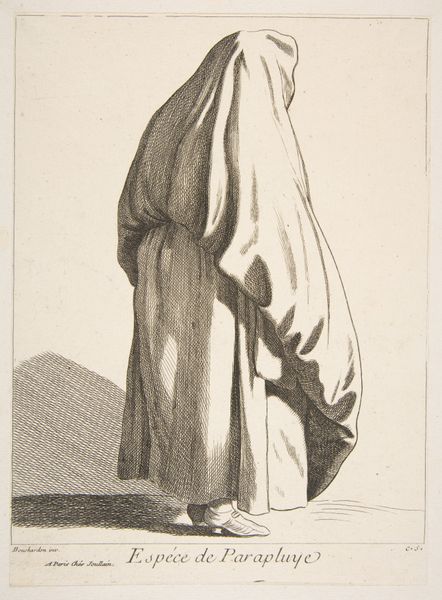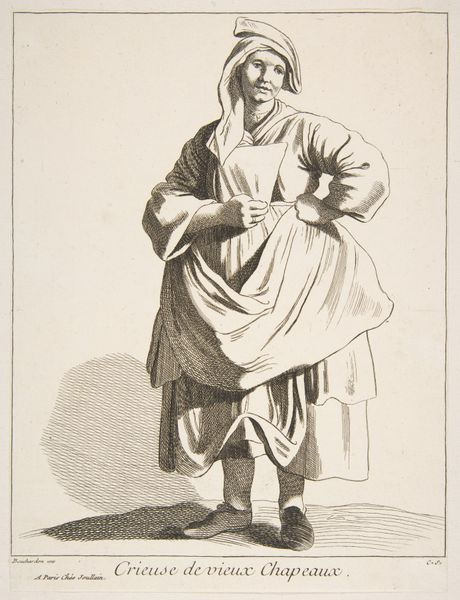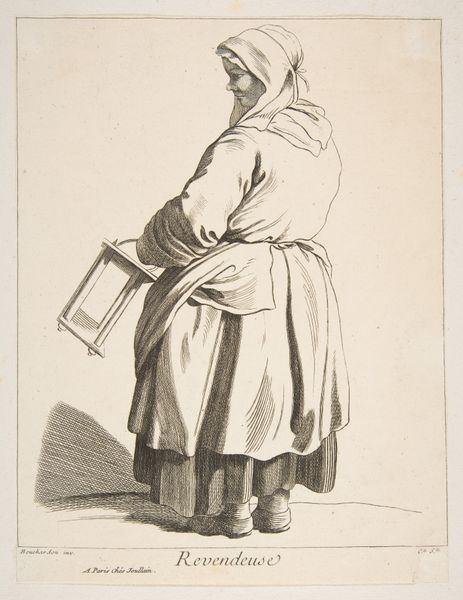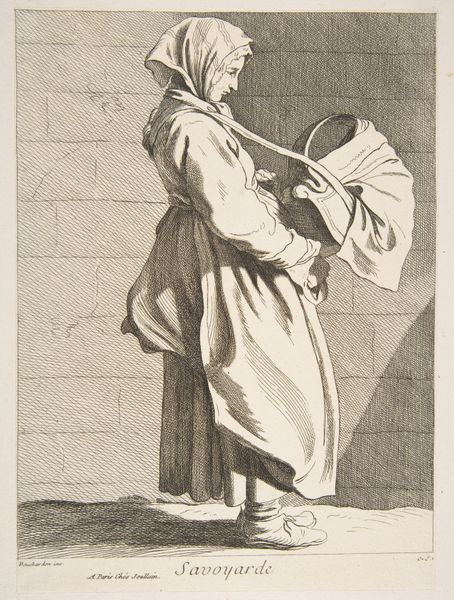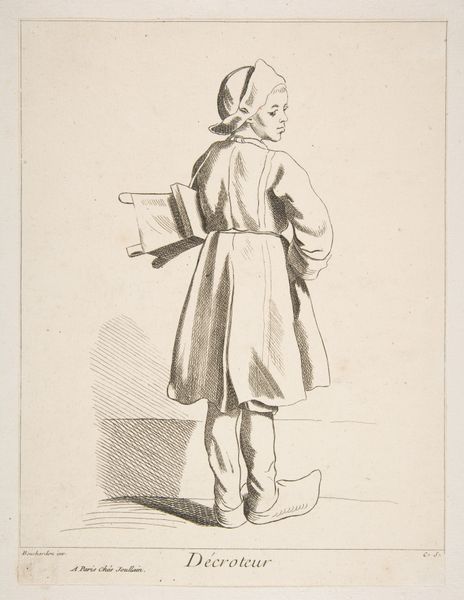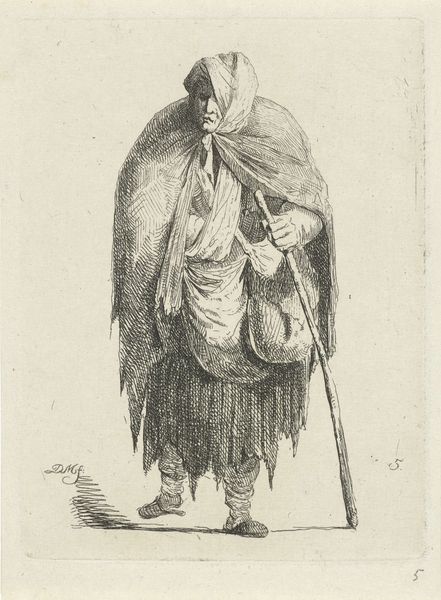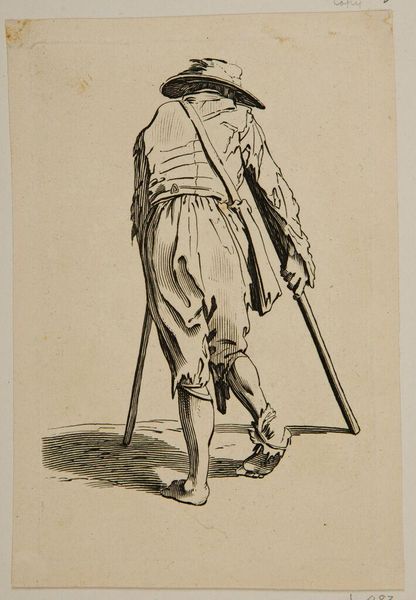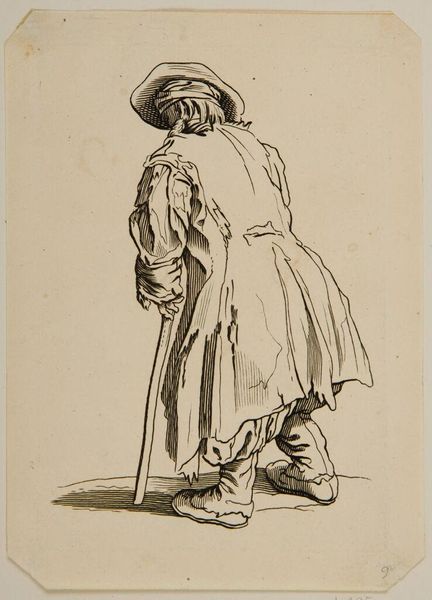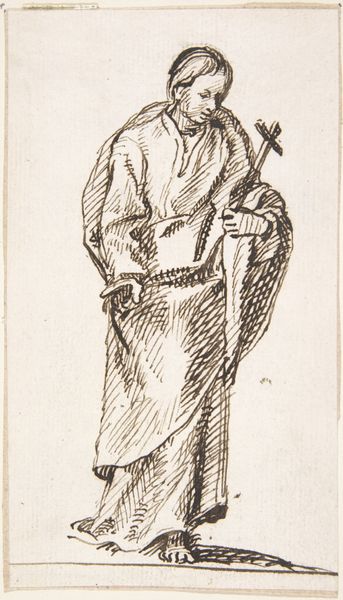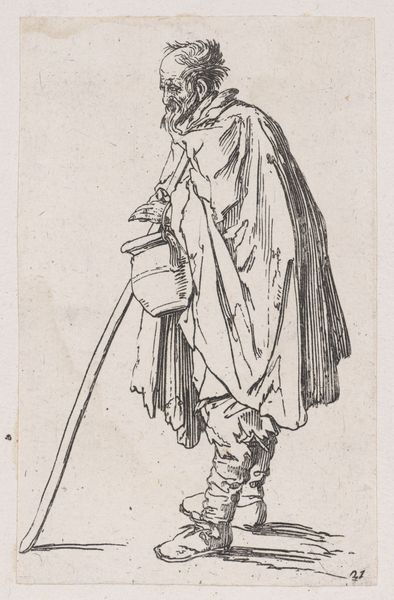
drawing, print, etching
#
portrait
#
drawing
#
baroque
# print
#
etching
#
figuration
#
line
#
genre-painting
#
realism
Dimensions: Sheet: 9 5/16 × 6 5/8 in. (23.6 × 16.8 cm) Image: 8 11/16 x 6 9/16 in. (22.1 x 16.7 cm)
Copyright: Public Domain
Editor: This is "A Poor Old Woman," an etching created around 1742 by Anne Claude Philippe Caylus. There’s something so compelling in the stark simplicity and focus on the subject's posture. It’s not idealized in any way, capturing a sense of weariness and resilience. How do you see this image functioning within its historical context? Curator: Well, seeing this etching through a historical lens reveals interesting social commentaries. Prints like this, circulated widely, engaged a growing public sphere in the 18th century. Think about the art market developing, a burgeoning middle class. Who would be purchasing these prints? What does this choice of subject matter—the “poor old woman”—say about the evolving societal attitudes? Editor: That's fascinating. I hadn't considered the print market itself. Were these images intended as social critique, or simply representations of everyday life? Curator: Perhaps both, or neither precisely. Consider how Baroque ideals of heroism and grand narratives were shifting. Realism was emerging. So this detailed observation becomes important. Think of the visual vocabulary - what’s emphasized, what's minimized? Could this realism function as a critique by contrasting starkly against courtly portraiture, almost forcing a confrontation with a different, less glamorous reality? Or even an emotional response to that reality. Editor: So, it’s not just about *what* is shown, but *how* it’s shown and where it was viewed? The market, the print’s existence as multiples… it’s all contributing to the meaning? Curator: Exactly! How did the museum as an institution create an audience and contribute to social constructs such as "poverty"? Editor: This really reframes my perspective. I came in thinking about the subject matter only, but the medium itself plays such a crucial role in its message and its consumption. Curator: Indeed. Art isn't created or viewed in a vacuum. Its cultural impact ripples out. The politics of imagery!
Comments
No comments
Be the first to comment and join the conversation on the ultimate creative platform.
